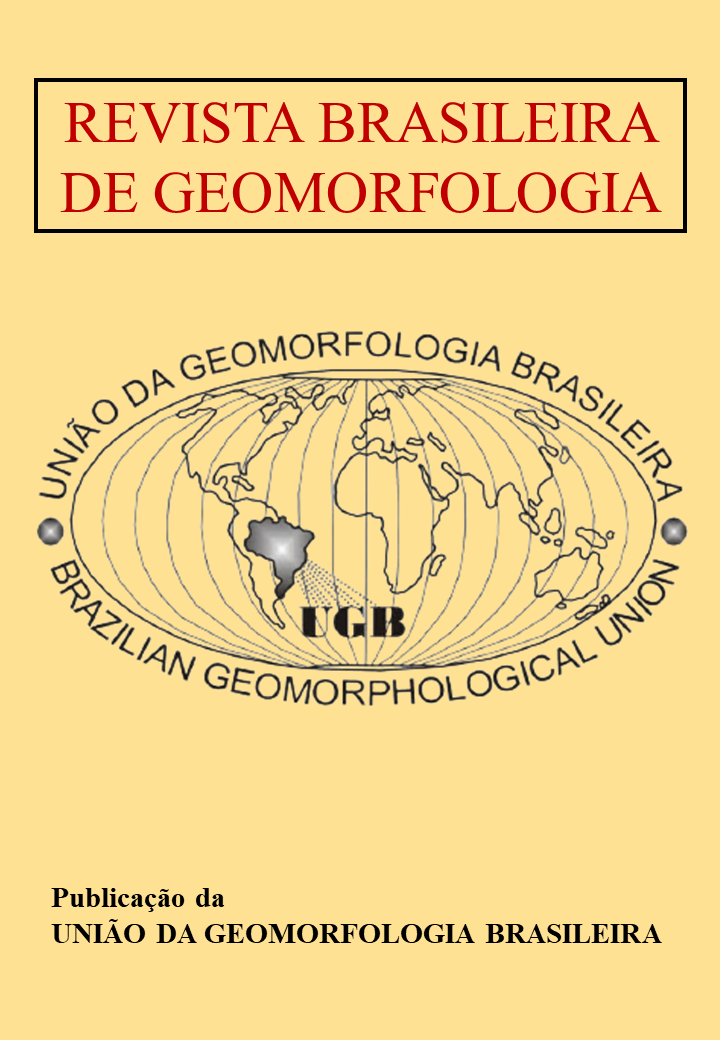Subterranean river captures in siliciclastic rocks in a semiarid climate: the case of the Poti River Canyon, Brazilian Northeast
DOI:
https://doi.org/10.20502/rbgeomorfologia.v25i2.2446Keywords:
Drainage rearrangement, Epigenesis, Parnaíba RiverAbstract
This research investigates a possible subterranean river capture responsible for the morphogenesis of the Poti River Canyon, which crosses uplifted border of Parnaíba Basin, in Northeastern Brazil. Morphological and lithostructural evidence of river captures, from remote sensing products (e.g. drainage network, topography, paleotopography, structural fabric) and field expeditions, were analyzed. The results indicated a sudden inflection of the Poti River upper course; low-relief divides that are anomalous to the local geomorphological context; canyon with valley segments with asynchronous morphologies; dissolution-controlled block collapse into fracturing patterns. Based on this data set, we propose an subterranean river capture evolutionary model for the formation of the Poti River Canyon, which had its closure linked to the Pleistocene, based on paleotopographic modeling. Such drainage rearrangement would have been influenced by a Neogene-Quaternary morphogenetic framework of structural reactivations, regional uplift and climatic oscillations. In this context, it was concluded that epigenic processes were important for a drainage rearrangement of approximately 10,540 km² of areas in a semi-arid region, with sandstone substrate.
Downloads
Downloads
Published
How to Cite
Issue
Section
License

This work is licensed under a Creative Commons Attribution-NonCommercial 4.0 International License.
Author (s) retain copyright and grant the journal right of first publication with the work simultaneously licensed under the Creative Commons Attribution License that allows sharing the work with recognition of its initial publication in this journal.








